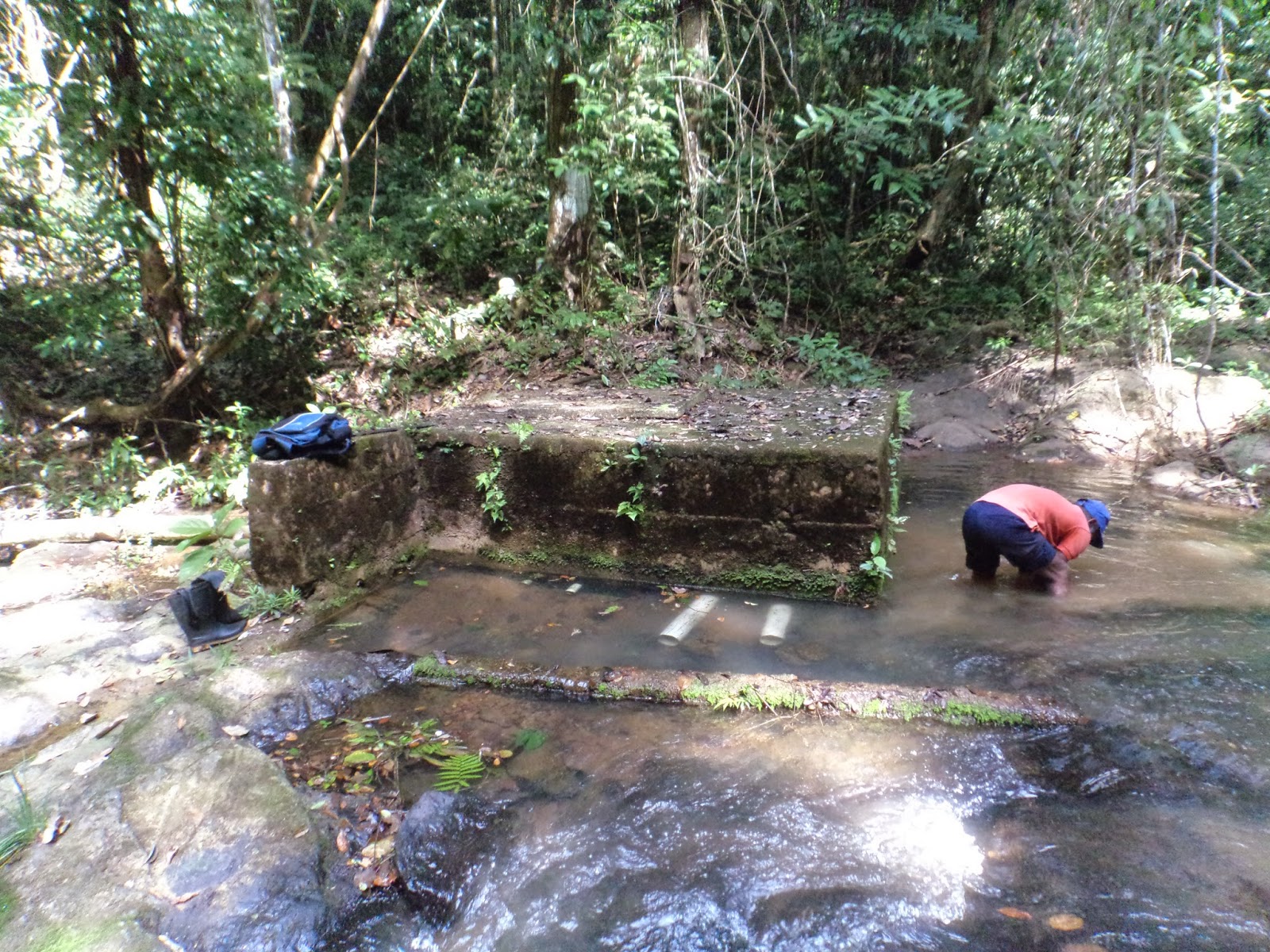By now I have been to the toma of Taimati a couple of times
(note: toma being the term used for our aqueduct’s water capture point). In the
case of my community the toma is a large concrete box built onto the side of a
small cascade in the bend of a river called the Rio Julian Martin. Our first
trip out there was quite a doozy. After the community took a vote that
repairing our aqueduct would be a priority for my two years here, I knew I
needed to see the source of our aqueduct. Most people see the source of the
aqueduct well before this time, but I had heard that it was very far away and
nobody seemed too enthusiastic about taking an unnecessary trip out there.
Having established the necessity of the trip with this vote, I spoke with the
aqueduct’s plumber and we decided to set out. Of course our first day it rained
the night before so we postponed, but finally our day came to go visit this
legendary toma.
To make sure we got off to a good start I woke up at 6 a.m.
and we were ready to go by 7. I sported long pants, and quick dry shirt, and my
rubber boots that I bought here in country ready to conquer the trail! We set
off at a pretty good pace and I took photos of the areas that could use some
improvement along the way. Now when I say along the way, I mean aLONG
the way. It took us every bit of three and a half hours to finally arrive at
the toma. Once arriving there I snacked on some beef jerky, aired out my feet,
and tried to mentally prepare for the trip back. I should add a note about my
previously mentioned outfit, specifically the boots. I bought these rubber
boots here in Panama, a country where a 5’10” man is particularly tall and for
some reason even the tall people have small feet. I am not sure the $12 boot
manufacturer was entirely competent in shoe making seeing as how it would seem
the technique for larger size shoes was to maintain width and just lengthen
them. These boots have never felt good. Not during training, not during my
first months, and certainly not on the toma trip. I had heard that they would
break in, but they never did (luckily my site is dry enough that I did not need
to wear them often outside of this walk). As per the usual, after 30 minutes of
the hike my feet were hurting and after an hour and a half into the return trip
they were screaming! I had to take breaks to only mentally cope with how badly
my feet were hurting. I finally made it back to Taimati, took my shoes off, and
rested the 8+ new blisters I had acquired on my feet.
The next days, since I couldn’t really go anywhere very
quickly, I spent thinking about the size of the challenge ahead of me. The
problem with the aqueduct, as I had been informed, was that the river crossings
were not built very well, so when the river rises in the wet season the tubes
are pushed apart. It becomes difficult to get water to town if your aqueduct
more closely resembles the end scene of a game of Jenga strewn along the
riverbed. There are also many air release points along the tubing to allow air
blockages to escape and the water to flow freely (good). These air release
points are in the form of holes put into the tubes with sticks sharpened and
then shoved into them (bad). I had figured fixing these two things would be
fairly simple, besides I had seen both of these basic concepts in training and thought
how hard could it be? Now as I sat upon my plastic chair I realized the
problems. Logistically getting to my site is hard enough, and now to bring 100
lb cement bags along a trail for 3 hours AFTER getting them to my site still
dry would be a-whole-nother level of difficulty. Along with this add in the
fact that my aqueduct is, for the first two and a half hours from the tank, 4”
tubing and for the last half hour 6” tubing and all of the sudden costs are
through the roof! I eventually talked to my Program Director and she said that
we should just start out basic, doing a survey of the line and getting some
data that we could bring to other organizations, such as Engineers Without
Borders, and see if they could assist in the projects.







No comments:
Post a Comment